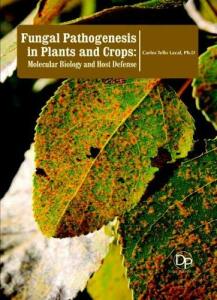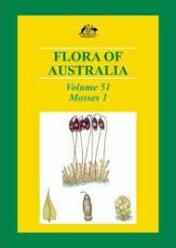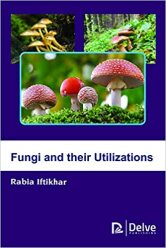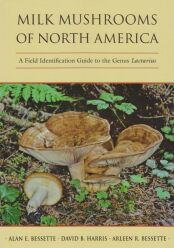Fungal Pathogenesis in Plants and Crops: Molecular Biology and Host Defense (2016)-Carlos Tello Lacal
€167.27 included CZ VAT
€167.27 without VAT
|
Country | % VAT (books) | % VAT | |
|---|---|---|---|
| DEU | 7 | 19 | |
| HUN | 5 | 27 | |
| AUT | 10 | 20 | |
| BEL | 6 | 21 | |
| BGR | 9 | 20 | |
| DNK | 25 | 25 | |
| EST | 9 | 20 | |
| FIN | 10 | 24 | |
| FRA | 5,5 | 20 | |
| HRV | 5 | 25 | |
| IRL | 0 | 23 | |
| ITA | 4 | 22 | |
| CYP | 5 | 19 | |
| LTU | 9 | 21 | |
| LVA | 5 | 21 | |
| LUX | 3 | 16 | |
| MLT | 5 | 18 | |
| NLD | 9 | 21 | |
| POL | 5 | 23 | |
| PRT | 6 | 23 | |
| ROU | 5 | 19 | |
| GRC | 6 | 24 | |
| SVK | 10 | 20 | |
| SVN | 5 | 22 | |
| ESP | 7 | 21 | |
| SWE | 6 |
25 |
The price is valid for Czech customers only. Due to a new regulation of the European Parliament the final price must be calculated according to the country of final destination starting from 1st July 2021. Please take a look at the chart above for valid VAT rate in your country.
https://ec.europa.eu/taxation_customs
Warranty (months) 24
Availability 1 month
Fungal pathogens constitute one of the major threats to global crop production, with an estimated annual yield loss of 15% being attributed to them. The main strategies employed by farmers to prevent, reduce or fight fungal infection range from the use of resistant crop cultivars to the treatment with fungicides or the establishment of crop rotation practices. The life cycles and infectious strategies of the main crop fungal pathogens, as well as the mechanisms triggered by plants in response to these pathogenic agents, emerge as essential areas of study requiring furhter investigation in order to optimize fungal fight practices. In this book, a wide range of peer-reviewed research papers fully covering the above-mentioned topics have been compiled.The first chapter describes the cell wall, the initial barrier fungal pathogens need to overcome in order to colonize their host, particularly how modifications in its composition influence plant resistance to infection. Chapter 2 provides an overview of the different signaling pathways triggered in response to plant cell wall wounding, since wounded tissue constitutes an important way of entry into the plant employed by pathogens. The main features of the infection process by fungi and oomycetes in terms of gene ontology are reviewed in Chapter 3. Chapter 4 discusses the roles of the effectors released by biotrophic and hemibiotrophic fungal pathogens in the infectious process and the mechanisms enabling their release by fungi and uptake by plant hosts. The functioning of the complex plant-pathogen recognition process is illustrated in Chapter 5 by studying the case of tomato Cf-2-mediated resistance against leaf moulds. The process continues to be described in Chapter 6, where the differences between host and non-host resistance mechanisms are presented. Plants react against the presence of fungal pathogens by producing a plethora of compounds with antifungal activity, such as reactive oxygen species, secondary metabolites, proteases and phytoalexins, whose roles in fungal fight are reviewed in Chapters 7 to 10. Chapter 11 investigates the effects of the main phytohormones in shaping the plant-pathogen interaction by depicting the example of the soil fungus Fusarium oxysporum. Going back to the infectious process, Chapter 12 examines the use of plant nutrient supply by the growing phytopathogenic fungi. In Chapter 13, the control by plants of the programmed cell death process in response to fungal pathogens is analyzed. The different laboratory-based techniques employed in plant disease detection, ranging from polymerase chain reaction (PCR) to fluorescence in situ hybridization (FISH) or enzyme-linked immunosorbent assay (ELISA) among others, are reviewed in Chapter 14. Chapter 15 discusses the latest trends for studying plant-pathogen interactions in the proteomics era. The last eight chapters feature practical cases involving the most important fungal crop pathogens. Chapter 16 describes the infectious process of Botrytis cinerea, the genetical variability observed in both strains and virulence factors and the development of high-throughput genomics and proteomics analyses aimed at deciphering its host interaction mechanisms. In Chapter 17, the application of molecular studies to decipher the population structure and genetic diversity of the Fusarium graminearum species complex is reviewed. Chapter 18 briefly describes the molecular responses triggered in plant roots in response to Fusarium oxysporum and the use of biological control agents and genetic manipulation techniques against this pathogen. The production of effectors and its delivery into the host plant is once again described in Chapter 19, this time exemplified by the case of Magnaporthe oryzae. Chapter 20 illustrates the study of the Phytophtora infestans - Solanum tuberosum pathosystem by employing a computational model-based approach. In Chapter 21, the use of Brachypodium distachyon as a model system to underpin resistance mechanisms to rust fungi belonging to the Puccinia complex is discussed. Chapter 22 explores the whole life cycle and infectiuous process corresponding to the maize pathogen Ustilago maydis. Finally, the molecular interactions between Zymoseptoria tritici and its host crop wheat (Triticum aestivum L.) are dissected in Chapter 23.The book intends to be beneficial for college students, researchers, teachers, and farmers in their approach to the field of plant fungal pathogenesis.
ISBN: 9781680958980
English, 304 pages, hardback

 english
english



